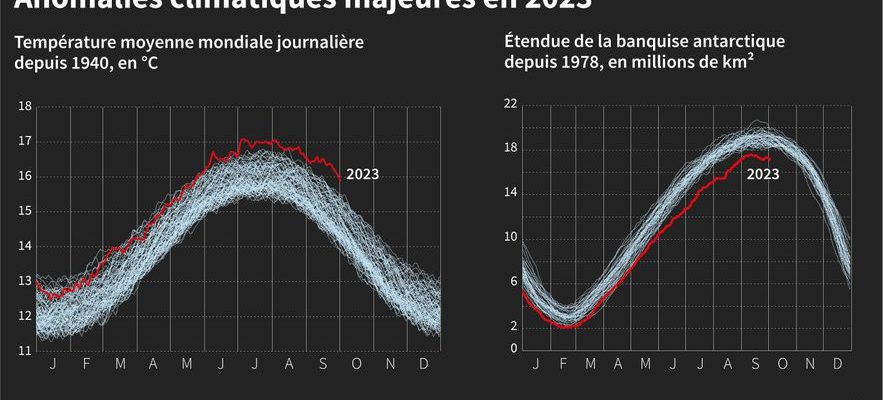This is a sign that the fight against climate change is “faltering”. Financing for climate adaptation in developing countries fell by 15% in 2021 year-on-year, according to the United Nations, lamented UN Secretary-General Antonio Guterres.
In its latest annual report on climate adaptation financing published Thursday, the United Nations Environment Program (UNEP) highlights that “the financing gap is widening, now between $194 and $366 billion per year” , despite the acceleration of global warming.
Damages amounting to 500 billion dollars
According to UNEP, it is even increasing “despite the promises made during COP26 in Glasgow to double adaptation funding between 2019 and 2025, to reach 40 billion euros per year”, thus constituting “a worrying precedent”.
Adaptation, in other words measures intended to reduce the exposure and vulnerability of countries and populations to the effects of climate change, was an important point of the Paris agreement aimed at containing warming “well below 2° C compared to pre-industrial levels.
Many developing economies, the least responsible for greenhouse gas emissions, are among the most exposed to the dramatic and destructive effects of global warming: extreme weather phenomena, rising water levels, fires, droughts, etc.
“This inability to adapt adequately intensifies the climate crisis and has massive consequences on the damage it causes, particularly for the most vulnerable,” insist the authors of the report, with an eloquent figure: “The 55 economies the most climate-vulnerable have already suffered more than $500 billion in damage over the past two years.” “The world must urgently reduce greenhouse gas emissions and scale up adaptation efforts to protect vulnerable populations,” urges Inger Andersen, Executive Director of UNEP, in the report’s foreword. For the moment, she notes that “neither one nor the other is happening”.
Major climate anomalies in 2023
© / afp.com/Paz PIZARRO, Sylvie HUSSON, Clement KASSER
Broken promises
In 2009, rich countries promised to provide $100 billion to finance both adaptation to global warming and emissions reductions in developing countries by 2020.
But this amount ultimately only reached $83 billion according to the most recent figures, provided by the Organization for Economic Co-operation and Development (OECD). “Developing countries are standing by, waiting for the necessary funds to protect their populations against imminent climate disasters,” Harjeet Singh, head of global political strategy at the International Climate Action Network, told AFP.
“Without rapid adaptation, we expect unimaginable loss of lives and livelihoods from relentless flooding, raging wildfires and soaring seas,” she continues.
According to UNEP analysis, public funding for adaptation was $21.3 billion in 2021, compared to $25.2 billion in 2020. However, for Paul Watkiss, co-author of the report, it is “too early ” to identify a medium-term trend, due to imponderable factors such as the war in Ukraine or the Covid-19 pandemic.
UNEP now estimates, taking into account the delay, that the funds necessary for developing countries to adapt to climate change will be between 215 and 387 billion dollars per year for the coming decade. Beyond 2030, adaptation costs are expected to increase further, “significantly”.
Fossil energy giants
Several sources of potential financing are highlighted in the report, notably the private sector or reforms of the World Bank and the International Monetary Fund (IMF) proposed by developing countries in order to align with climate priorities.
For Antonio Guterres, part of the financing of this fund should fall to the giants of the fossil fuel industry, via an exceptional tax. “Fossil fuel barons and those who support them helped create this mess; they must support those who suffer from it,” he said.
Regardless, the report emphasizes that adaptation is a good investment, citing studies that say every billion invested against coastal flooding results in a $14 billion reduction in economic damage.
